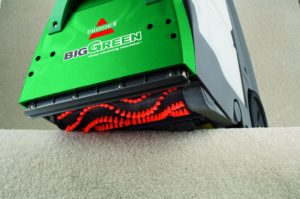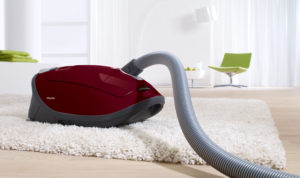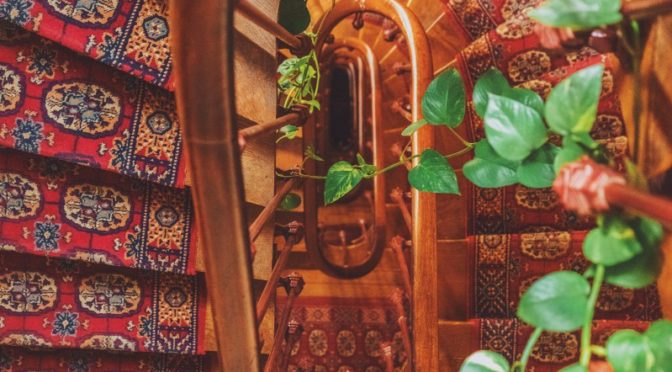
If you’re installing a carpet in your home, you’re going to need to make a number of decisions. One of the most significant will be whether or not to install carpet on your stairs. While there’s little denying that carpeting can add comfort, beauty, and durability to stairs, there are a number of cons to consider as well. Today we’ll look at the pros and cons of using carpets on stairs and answer some of the most frequently asked questions involving carpeting stairs, including installation techniques, kinds of stairs that do and don’t work with carpeting, and potential risks to keep in mind.
What are the pros of using carpeting on stairs?
Although people choose to carpet stairs for various reasons, the most common are centered around beauty, comfort, durability, and noise reduction. Although a wooden staircase can be attractive on its own, carpeted stairs simply look inviting. That visual aesthetic isn’t deceiving, carpeted stairs are universally regarded as more comfortable underfoot than any kind of bare stairs; this is the primary reason carpets are installed on all kinds of flooring.
Apart from being attractive and comfortable under foot, two of the most frequently chosen reasons for carpet are its durability and noise reduction properties. Stairs last longer with carpets for the same reason feet last longer with shoes; they provide an insulation from the environment–in the case of stairs, it’s protection from foot traffic. This insulation is what leads many homeowners to install carpets on stairs to reduce or eliminate the noise generated by foot traffic on wooden stairs. Although you can reduce the groans of wooden stairs and floors to some degree, there’s no way to do as much with flooring as you can when you add an underpad and carpet to a floor. That said, if you want to completely eliminate stair squeak, you’ll need other techniques.
Which kinds of stairs benefit most (and least) from carpeting?
Builder-grade stairs and generally noisy stairs are the kinds most likely to benefit from carpeting. Builder-grade stairs are also referred to as functional or basic stairs; they’re installed as cheaply as possible with the goal of moving people up or downstairs . With such stairs, aesthetics and comfort aren’t a priority. Carpeting such stairs can dramatically improve them in ways that painting won’t.
On the other hand, you don’t want to try to carpet attractive hardwood stairs, as you’re going to dramatically reduce their aesthetics in the process. You’ll need to nail down tack strips into the wood, creating holes in the process. And if you had beautiful hardwood stairs before carpeting, they won’t be after.
Noisy stairs are the other general category where carpeting can provide large benefits (as mentioned above). Typically noisy stairs are noisy because they were made from materials too thin to effectively absorb and deaden sounds. Instead of spending time replacing treads and risers, we’d recommend just carpeting them.
How do you install carpet on stairs and how long does it take?
There are two main ways of installing carpets on stairs: the waterfall technique and the cap-and-band or wrapped nose method. Let’s provide a brief overview of both.
Waterfall installation is the more popular of the two methods due to ease and speed. It’s faster because you only need a single strip of carpeting. You simply cut carpet as long as your stairs and then start laying it out from the base of the stairs until you reach the top. It’s essentially like a stair runner. You can only use this technique if your stairs don’t have a nosing, which is a tread section that extends past the riser. The tread is the horizontal section (the part you step on) while the riser is the vertical part (that provides stair height).
The cap and band technique, also known as the wrapped nose method, is more complex but can provide better results, especially for beginners. Instead of using one section of carpet for each stair, you use one section for each tread and a second for each riser. The advantages of the cap and band technique are that tightening is unnecessary, unlike with the waterfall method. Cap and band installations also work with treads with nosing.
What are the risks of using carpets on stairs?
The main risks of carpets on stairs involve slips and falls, which are significant and should be taken seriously. However, even though carpeted stairs result in more falls on stairs (typically while traveling down) than uncarpeted stairs, the falls are usually gentler due to the insulation provided by the carpeting. Carpeted stairs increase fall risks for three reasons.
First, they reduce the tread edge (the border of the tread that your foot makes contact with just before stepping into thin air), which reduces your grip. This effect is particularly significant with slippery carpet materials like polyester or olefin.
Second, carpets reduce depth perception since the fabric creates a more complex pattern than that of bare flooring; you might not see where you’re stepping until you’ve already misjudged where your foot was going to land.
Third, carpets reduce the tread depth of stair risers, which can result in up to half an inch less tread depth. Building codes stipulate at least 10 inches of depth in the tread. The less you have, the less room your foot has for steps before being plunged into thin air.
Keep in mind that there are certain kinds of carpets that aren’t safe for stairs, such as thick carpets, carpets with loose fibers, and many natural fiber carpets. Don’t compromise safety for aesthetics.
Finally, it’s also important to note that many carpet manufacturers don’t warranty carpets used on stairs due to the high amounts of traffic they receive. There are manufacturers that cover them, but as a rule, stair carpets are often excluded from warranty coverage.
That said, plenty of people use carpets on stairs without falling on a daily basis; it’s just important to be aware that there are some risks involved, as there are with using bare floors on carpets.
Which carpet cleaners and vacuums are best for carpets on stairs?

While you can technically use just about any carpet or vacuum cleaner on carpets with stairs, we typically recommend the Bissell 86T3 Big Green for carpet cleaning and the Miele Complete C3 Soft Carpet for vacuuming. Both are buy-it-for life machines; the Bissell has a reputation for cleaning messes other machines just…don’t. And when you wake up and realize you haven’t had to buy a new carpet cleaner or vacuum cleaner in more than a decade, you start to appreciate paying a little more for a lot more quality.

The Miele won’t roll over when it meets a high-pile carpet, unlike the vast majority of vacuum cleaners out there. And while both aren’t the cheapest machines on the market by a long shot, they’ll cost very little when their functionality is measured in decades, which is what you can expect from the Big Green and Soft Carpet.
![]() You can buy the Bissell 85T3 Big Green carpet cleaner here on Amazon. You can buy the Miele Complete C3 Soft Carpet here.
You can buy the Bissell 85T3 Big Green carpet cleaner here on Amazon. You can buy the Miele Complete C3 Soft Carpet here.
![]() Canadians can buy the Miele Soft Carpet here and the Bissell Big Green here.
Canadians can buy the Miele Soft Carpet here and the Bissell Big Green here.
 If you find our research on PMC helpful, you can follow our efforts to keep maniacally reviewing home cleaning tools by shopping through our links above. We promise to keep fighting the good fight against every horror children, animals, and grown, yet messy humans can inflict upon a clean home.
If you find our research on PMC helpful, you can follow our efforts to keep maniacally reviewing home cleaning tools by shopping through our links above. We promise to keep fighting the good fight against every horror children, animals, and grown, yet messy humans can inflict upon a clean home.

